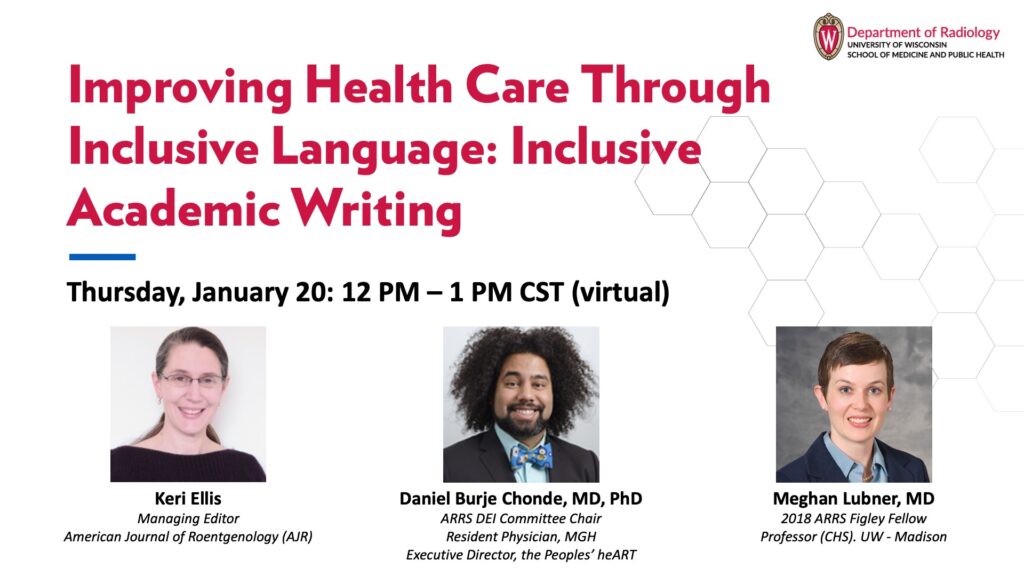
Fostering an inclusive, supportive environment is central to the Department of Radiology’s mission, and our recent Grand Rounds speakers provided easy, actionable ways that we call all contribute to that mission. Vice Chair of Equity, Anand Narayan, MD and Director of Diversity & Inclusion, Daniela Martin, MD recently invited experts to give Grand Rounds on “Improving Health Care Through Inclusive Language: Inclusive Academic Writing.” The talk featured the following panelists:
– Keri Ellis, JD, Manager of the American Journal of Roentgenology (AJR)
– Daniel Burje Chonde, MD, PhD, American Roentgen Ray Society (ARRS) Diversity, Equity, and Inclusion (DEI) Committee Chair, Resident Physician at Massachusetts General Hospital (MGH), and Executive Director of The People’s heART
– Meghan Lubner, MD, Professor (CHS) at the University of Wisconsin-Madison
The talk, which was streamed live to the public on January 20th, began with introductions of the topic and speakers by Dr. Lubner, who completed the ARRS Figley Fellowship in radiology journalism in 2018. Dr. Chonde then discussed exploring the role of DEI in an academic radiology department. “Diversity is a thing for everyone,” Dr. Chonde said. “Workforce diversity groups are meant to serve workplace diversity [and] health equity.”
Physicians at academic medical centers all engage in some form of academic writing, making it an ideal area of focus for DEI workgroups. Keri Ellis, JD highlighted the uniqueness of academic writing and the role of language. “Thinking about academic writing – [it] isn’t the same as creative writing or a tweet. It does have important attributes to keep in mind. Typically, it is focused on a specific subject and usually based on research findings and relying on previous works.” She then introduced the topic of inclusive language in academic writing, explaining “Culture can be built in this body of literature. You are likely going to see socioeconomic cultures in academic writing, as well as national cultures.”
Ellis provided examples from research literature, challenged the audience to think about how the wording invoked particular perceptions, and provided ways to use language to avoid these unintended associations. “Inclusive language not only focuses on the intent of the speaker or writer, but also the impact of writing something in a particular way. When we use inclusive language, ideally the result is consistent with the intent of the speaker or writer,” Ellis noted.
We encourage everyone to watch this highly informative workshop to learn how you can make your writing more inclusive. You can view the entire workshop here: https://mediaspace.wisc.edu/media/Inclusive+Academic+Writing+Grand+Rounds+012022/1_8impcb73